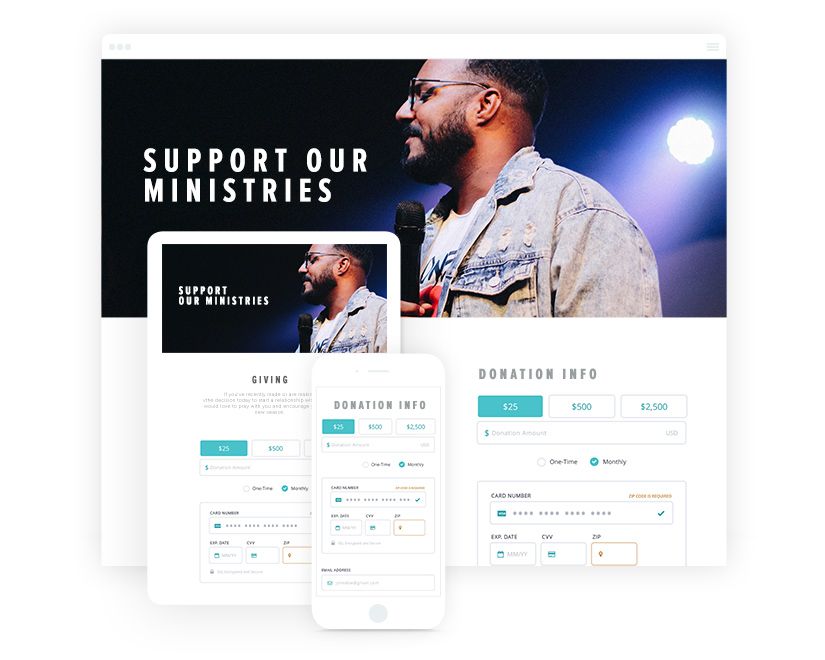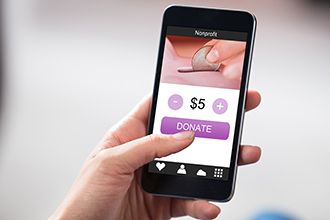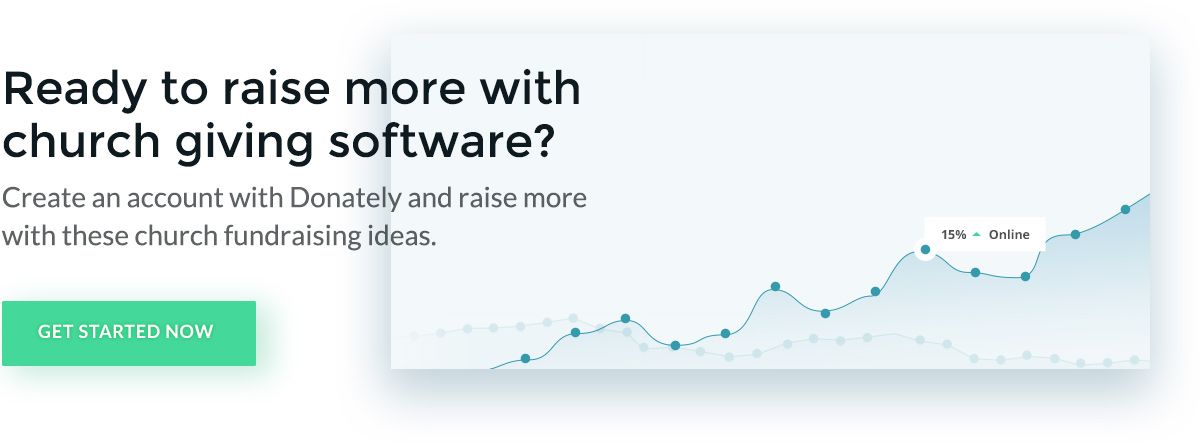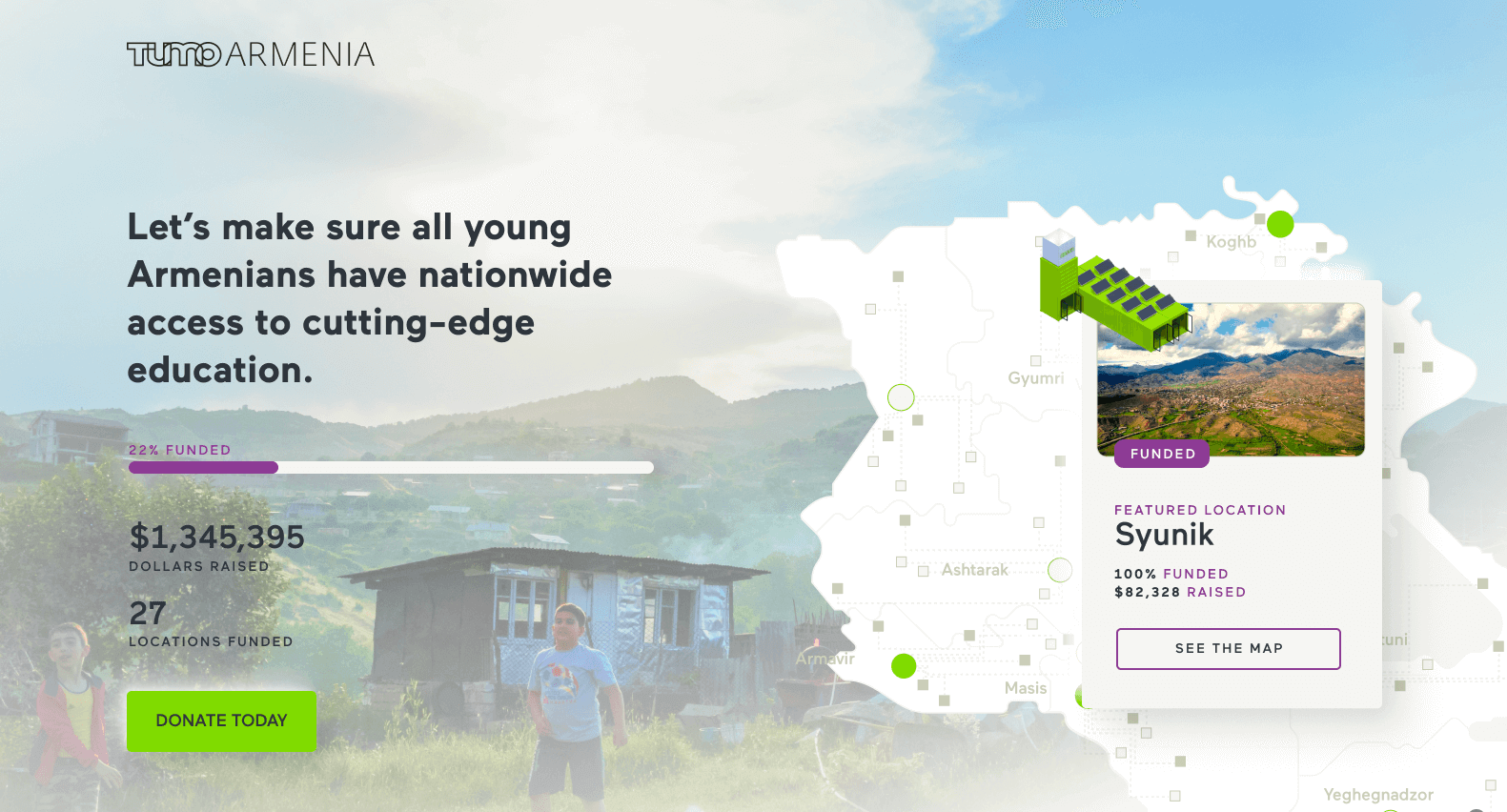Church Fundraising Strategies for the Hybrid Era (2025 Edition)

Embracing the Hybrid Reality in Church Fundraising
In this comprehensive guide, we’ll explore both tried-and-true ideas and contemporary approaches that leverage technology and innovative campaigns to appeal to your church members. No matter your denomination or church size, these ideas will help you engage supporters both in the pews and online. Here’s what we’ll cover:
- Embrace Online Giving Tools and Platforms – How church giving software and digital engagement can amplify donations.
- Hybrid and Virtual Fundraising Ideas – Creative ways to fundraise with text giving, live-stream events, and online challenges.
- Recurring Giving Programs and “Giving Circles” – Building membership-style support through church member monthly gifts and tithing initiatives.
- Major Donor and Project-Specific Campaigns – Funding big needs (buildings, operations, missions) with capital campaigns and high-impact donors.
- Peer-to-Peer & Staff Fundraising – Empowering your community (and even church staff) to raise funds on your behalf.
- Engaging Events (In-Person, Digital, and Hybrid) – Galas, service projects, youth fundraisers, specific to church members – with a modern twist for greater reach outside your congregation.
The Evolving Landscape of Church Giving
Church fundraising has changed—and fast. With many congregants now attending online or engaging in hybrid formats, the traditional offering plate alone no longer meets the moment. Today’s churches need flexible, tech-enabled giving strategies that work on-site, online, and everywhere in between.
What Defines a "Hybrid Church Member Congregation" in 2025?
This post kicks off our 3-part series, Church Fundraising Ideas for Today’s Hybrid Congregation. In this guide, we’ll explore how to engage supporters across all platforms—whether they’re in the pews, on their phones, or tuning in from across the country.
Why Traditional Fundraising Alone Isn't Enough Anymore
In Part 1, we zero in on digital-first strategies: mobile giving, live-streamed campaigns, peer-to-peer tools, and donation platforms that make generosity seamless. These approaches allow churches to scale giving and meet the expectations of a modern, mobile audience.
What is Church Donation Software?
Church donation software is more than just an online platform for financial transactions. It's a specialized tool, designed with churches in mind, that streamlines and manages the donation process — and more. But what makes it so special? Online giving platforms for churches make giving easy for your congregation. Many platforms also support donations, payments, fundraising, and reporting beyond traditional features.
The Opportunity: Blending Digital and Traditional to Maximize Ministry Impact
If your church is looking to increase giving amongst your church members, streamline donation systems, or launch a new virtual campaign, this is where to start. We updated our original 2019 church fundraising ideas by adding new insights. This list of strategies aims to inspire your congregation’s generosity.
No matter which ideas you pursue, remember that successful church fundraising centers on community. Get your members involved, show them the impact of their gifts, and use secure, convenient tools to make giving easy. Let’s dive into the updated ideas and strategies!
That journey starts with your digital infrastructure—the platforms and systems that make generosity seamless, secure, and scalable.
Foundational Digital Giving Solutions for Hybrid Churches
Embrace Online Giving Platforms and Tools
Robust Giving Platforms: We recommend using a full online giving platform, also called a “digital collection plate,” for modern church fundraising. This appeals to church members and adds to your traditional offerings. Church giving software like Donately, Tithe.ly, Pushpay, or Planning Center Giving provides tools that make it easy for people to give anytime and anywhere. This is important as more worshipers join remotely. By adopting online giving, you unlock features and channels that can significantly boost generosity.
Custom Donation Pages and Campaign Pages: Create user-friendly, branded donation pages where members can contribute with a few clicks. A special campaign page or donation form lets you share your church’s story clearly. You can show images or videos, offer recurring donation options, and display a real-time fundraising thermometer to encourage support. These pages can serve as virtual “offering plates” during livestreams or as landing pages for special appeals. Churches using Donately’s campaign pages have seen conversion rates up to 8x higher than other online platforms – a testament to how effective a well-designed page can be in driving donations.

Mobile Giving Options for On-the-Go Generosity
Mobile giving lets your congregation donate by sending a text message. Your church can assign a unique keyword and phone number for instant donation links, ideal for online viewers or quick appeals during worship. Electronic giving rose 50% last year, while desktop giving dropped 10%. Making it easy to give via smartphone helps you reach more members who prefer digital donations. Tip: Promote your text-to-give number on livestreams, emails, apps, and social media. Reputable platforms use secure, PCI-compliant processes for text donations.
Contactless Giving for In-Person Convenience
Ease and Security for Donors:
- A good church donation software will make giving ridiculously simple – and safe. Look for donation form features like digital wallet payments (Apple Pay, Google Pay), bank transfers, and credit/debit card support, so donors have choices. Also ensure the platform payment processor is SSL-secured and PCI-compliant for handling payments. When donors know their online gifts are protected, they’ll be more likely to give. For instance, Donately’s mobile-responsive forms and pages ensure that whether someone is on a laptop or a phone, the contactless donation experience is seamless and secure. Nearly half of church donations now happen via card or online transactions, so having a trustworthy digital donation form is essential.
Recurring Tithing and Giving
Weekly and Monthly Giving for Congregations:
- One of the best ways to ensure steady funding for your church is to encourage recurring donations. Online giving forms let donors set up an automatic weekly or monthly gift – effectively a digital form of tithing. Highlight this option on your church app or donation page so that a one-time giver can opt to “make this a recurring contribution.” Recurring gifts provide reliable income and can significantly increase total giving over time (since people tend to give more in aggregate when spreading payments out). Donately’s tools include flexible recurring schedules to fit donor preferences. In your church communications, emphasize how even a modest monthly gift adds up to big impact over the year. Celebrating and thanking your recurring givers (perhaps enrolling them in a special appreciation club – more on that later) will also improve retention.
By embracing online giving technology and donation software, you’re not abandoning tradition – you’re augmenting it. Think of it as passing a digital offering plate to all the people who aren’t physically in the pews on Sunday to make a contactless donation. Even for those on-site, digital tools can simplify the process (no more forgetting checkbooks or cash). As your church considers new fundraising ideas, having this online infrastructure in place for church management will make every initiative more successful. You can collect donations through text during a live event, launch a campaign page for a special project, or invite members to start peer fundraisers – all through one integrated system. In short, a modern giving platform is the foundation that will support all the creative fundraising ideas to come.
Before diving into specific fundraising campaigns, let’s answer one of the most common questions churches are asking about hybrid giving.
How Can Churches Integrate Online and In-Person Donations?
To effectively integrate online and in-person donations, churches should adopt tools that unify all giving channels. Start by ensuring your giving platform or church management software supports:
- Unified reporting across text, church app, website, and kiosk giving
- Customizable payment forms that work on mobile apps and desktop and allow for giving donations via credit cards, ACH transactions, and mobile wallets
- QR codes displayed on bulletins and slides that link to your giving page
- Donation kiosks or tablets in the lobby for walk-up giving
- Announcements during service encouraging digital giving from smartphones
During in-person services, integrate giving moments with real-time digital calls to action. For example, display a slide with a QR code while the pastor discusses generosity, or allow people to give on their phones simultaneously with the offering plate. Promote digital giving or contactless donations before and after services. Use email, text, and push notifications through a church app like Hallow. This makes giving easy no matter how people attend.
Creative Fundraising Ideas for Blended Engagement (In-Person & Online)

What Is the Most Profitable Fundraising Event?
From our experience and industry trends, the most profitable fundraising events are often:
- Live-stream Give-a-thons that combine storytelling, donor recognition, and real-time urgency
- Annual Galas or Vision Dinners where attendees make pledges or donate during emotional moments
- Peer-to-peer campaigns with competition among teams (e.g. youth group vs. worship team)
These events work because they are personal, mission-driven, and often involve an emotional appeal that leads to larger one-time or recurring gifts.
Hybrid Community Events: Bridging the Physical and Virtual
Having a strong virtual fundraising presence is no longer optional for churches – it’s a must in 2025. While virtual ideas abound, it’s important to blend them with your in-person activities – that’s what truly makes a hybrid approach powerful. Always look for ways to link the two audiences. QR codes have become a handy bridge between physical and digital. Place QR codes on church bulletins or posters that, when scanned, take people directly to your donation page or campaign site as an easy way to make a quick and easy contactless donation. Embracing hybrid fundraising means you can connect with supporters both in-person and online, meeting people wherever they are. Here are some innovative ideas that leverage online tools and virtual engagement:
How To Run Effective Text-To-Tithe Campaigns
Text-to-give can be a standalone campaign. For example, declare the first Sunday each month "Mobile Giving Sunday" and encourage donations via text or your software. Texting is quick and easy—donors give in seconds once set up. Partner with a text-giving provider and pick a memorable keyword like "GIVE" or "HOPE." Show text instructions during services and in bulletins. Use text challenges and display live donor counts or thermometers as donations come in. Since mobile giving rose 50% while desktop fell, text campaigns meet donors where they are. You can also send updates via text. Market the campaign across all channels so everyone can join.
Live-Stream “Give-a-thon” (24 Hours of Giving)
One of the most exciting newer ideas is hosting a 24-hour live-stream fundraising event, sometimes called a “give-a-thon.” This idea takes inspiration from telethons and modern live-stream marathons. The concept: over the course of a day (or other set period), the church streams live content and encourages donations toward a goal. For instance, you might stream 24 hours of continuous prayer, worship, testimonials, or even fun challenges, while viewers donate online throughout. Donately’s Campaign Marketplace template called “24 Hours of Giving: Live Impact, Real Change” outlines how effective this can be. A dynamic livestream offers an interactive way to connect with supporters in real time, inspiring both immediate and long-lasting generosity.
During your live-stream event, include real-time progress updates like a fundraising thermometer on screen. Give donor shout-outs. Have Q&A sessions with pastors or special guests. Add giving challenges, such as a donor pledging $500 if 20 others give any amount in the next hour. The live aspect creates urgency and a sense of community – people see others giving and want to join in. Storytelling is central: share video clips of the impact of donations, conduct live interviews with beneficiaries or ministry leaders, etc., to show viewers exactly why their support matters. For example, if raising funds for a new youth center, do a live virtual tour of the under-construction space and have youth group members talk about their hopes for it.
Promote your live-stream early via email, app, social media, and texts. Encourage members to invite friends. Stream on Facebook Live, YouTube, or your website, keeping the donation link visible. A give-a-thon can engage your congregation and supporters worldwide. It’s a hybrid event—digital and personal—and very engaging. Some nonprofits raised six figures in one live-stream; churches can scale this down. Even a one-hour live worship or fundraiser works if you keep people involved. Using live video and real-time interaction can boost fundraising, especially for younger or remote members.
Crowdfunding and Peer-to-Peer Campaigns
Peer-to-Peer Fundraising Functionality: Empower your church leadership and members to fundraise on behalf of the church. With peer-to-peer tools, supporters can create their own fundraising pages (for your church’s campaign) and share them with friends and family. This dramatically extends your reach beyond the congregation. For example, a youth group might each set up a page to raise money for summer camp scholarships, or families could fundraise together for a mission trip. Modern fundraising software makes peer-to-peer campaigns easy to manage and integrates them with your main campaign page and goal tracking. By activating personal networks through peer fundraising, you turn passive supporters into passionate ambassadors.

Online Challenge Campaigns
Campaign-style challenges can boost giving and engagement, especially on social media. For example, run a “Weekly Acts of Kindness Challenge” where members do a service or giving activity weekly, share it online, and donate a small amount. Or try a “40-Day Generosity Challenge” before Easter or Thanksgiving, where participants give or raise funds daily and encourage others. These create routines that keep people engaged and widen reach. Launch a peer-to-peer fundraising challenge where church teams compete to raise the most for a cause, using leaderboards and fun weekly challenges to keep it fresh. Donately offers a template called “Board Challenge: Fuel the Mission Together” for friendly competition in peer-to-peer fundraising, adaptable to any church group.
Crowdfunding specific projects is powerful. Rally your community around one clear goal, like raising $5,000 to send 10 teens on a mission trip, with a story, photos, and a clear target. People often give more than usual when they see exactly what their gift supports. Share updates like “We’re 70% to our goal!” on your website and social media to encourage donations and sharing. Crowdfunding can also attract gifts from outside the church as members share with others who connect with the project’s mission.
Use seasonal or timed campaigns like #GivingTuesday, a global day of giving after Thanksgiving, by running online fundraisers for a specific ministry during that 24-hour period. Or organize a “Christmas Offering” online in December, focusing on a charity or outreach cause, where members give as a Christmas gift to Jesus. Be creative with digital campaigns—weekly or monthly challenges, themed crowdfunding, and viral social media drives can boost engagement. Provide frequent updates and interaction (comments, thank-yous) so online donors feel connected like at in-person events.
How Can Churches Boost Participation in Peer-to-Peer Fundraising Campaigns?
To encourage participation in peer-to-peer (P2P) campaigns, churches should:
- Recruit early champions: Ask influential members or staff to launch their own fundraising pages first.
- Gamify the campaign: Introduce friendly competition among ministry teams, youth groups, or families with leaderboards and prizes.
- Tell personal stories: Encourage participants to share why they give, serve, or support the campaign with videos, testimonials, or photos.
- Provide templates and graphics: Make it easy with pre-written social posts, email copy, and branded visuals they can personalize.
- Celebrate milestones publicly: Shout out top fundraisers or teams during services and online to drive excitement.
Making it fun, visible, and mission-driven will get more people involved and connected to the purpose behind the fundraising.
Skill-Based & Service Auctions
You can include auction elements in hybrid events, allowing both in-person and online members to participate. One effective approach is a "time and talent auction," where church members donate a skill, service, or experience—like guitar lessons, landscaping help, baking a custom cake, or offering a weekend cabin stay. These can be bid on during a church dinner, streamed online, or hosted through a silent auction platform.
To boost participation:
- Feature high-value or unique offerings (e.g., a home-cooked dinner from the pastor, or custom artwork by a member).
- Use bidding software or forms that allow remote participants to engage in real time.
- Promote through email and social posts, including descriptions, photos, and suggested value.
- Create themed bundles like “Family Fun Night,” “Self-Care Package,” or “DIY Home Fix” to make bidding more exciting.
Skill- and service-based auctions deepen community involvement while raising funds—and they let members give in ways beyond their wallet.
Digital Product and Merchandise Sales
Digital product and merch sales are a great way to raise funds while strengthening your church’s brand. Thanks to platforms like Donately, you can now include "cart items" directly in the online donation checkout—making it seamless to sell items and accept gifts in one place.
Here are top-selling ideas churches are using:
- Custom T-shirts, mugs, or hats with scripture, ministry slogans, or church logos.
- Seasonal devotionals, prayer journals, or sermon audio downloads created by staff.
- E-books or digital resources from past sermon series or Bible studies.
- Baked goods or meal kits sold in conjunction with special events.
Best practices:
- Make sure your giving platform supports digital delivery or order confirmation.
- Offer suggested donation tiers for each item (e.g., $25 gift = free T-shirt).
- Promote via social media, during livestreams, and through a dedicated merch page on your site.
These sales can supplement bigger campaigns, fund youth or mission projects, and offer donors a tangible way to represent their faith.
Balance In-Person and Digital Engagement
While virtual ideas abound, it’s important to blend them with your in-person activities – that’s what truly makes a hybrid approach powerful. Always look for ways to link the two audiences. For instance, if you host an in-person event like a concert or dinner, broadcast parts of it live for those at home and allow online viewers to donate during the event as well. Conversely, for an online campaign, mention it during Sunday services and perhaps have a moment where those in the sanctuary pull out phones to participate alongside online members.
QR codes have become a handy bridge between physical and digital. Place QR codes on church bulletins or posters that, when scanned, take people directly to your donation page or campaign site. This way someone sitting in a pew can scan and give online in seconds, rather than needing cash. It also works for event sign-ups or auction bidding – a quick scan connects them to the digital platform.
Another example: if your church runs a fundraising raffle or auction at a fall festival, allow people to buy raffle tickets or bid through an online form as well. You might get remote participants in the auction (with someone at the event proxy-bidding for them). If you have a church fundraiser dinner, sell tickets after church in the lobby. Also, sell tickets on your website for people who want to pay online. Donately’s new “Cart Items” feature helps you sell event tickets or merchandise during checkout. Blending these approaches ensures you’re not leaving any supporter out – everyone can engage in the way that’s most comfortable for them.
Takeaway: The churches that thrive in fundraising are meeting people wherever they are – physically and digitally. By combining on-site efforts with online tools, and church management systems you multiply the touchpoints for giving. As one nonprofit tech report put it, post-2020 giving will remain hybrid, with digital and in-person channels both critical to engage all generations. So whether it’s through a text message appeal, a streaming event, or a church picnic with a QR-code donation station, aim to create parallel opportunities for your congregation to participate. This kind of flexibility and convenience in giving will become only more important in the years ahead.
Proven Ways Churches Can Raise More Money Now

How Can a Church Raise Money?
Churches can raise money by diversifying their approach to giving. The most effective methods include:
- Launching recurring giving programs like a "Giving Circle"
- Running capital campaigns for specific projects (e.g. roof repairs, mission trips)
- Offering electronic giving and text-to-give options during services
- Hosting engaging events (virtual or in-person) tied to mission impact
- Encouraging peer-led (peer-to-peer) fundraising from ministry teams and youth groups
The key is to make giving easy, meaningful, and connected to the church’s bigger mission.
Strategies Churches Use To Increase Donations
To increase donations:
- Communicate the impact of giving clearly and often
- Offer multiple ways to give (online, in-person, mobile apps, recurring)
- Thank donors regularly with personalized messages
- Make recurring giving the default option on forms
- Share stories of lives changed by church ministries
- Involve leadership and staff in modeling generosity
- Include corporate matching gift tools, like Double the Donation, to seamlessly have your member's employers match their weekly giving.
People give when they see that their support matters and when it's easy to act on that desire.
How to Raise $5,000 for Church Ministrires?
If your church needs to raise $5,000 for a specific cause (like missions or youth camp), here are actionable strategies:
- Break it into small goals: 100 people giving $50, or 20 giving $250
- Run a 7-day text-to-give campaign with daily reminders and storytelling
- Use a matching gift platform like Double the Donation: Ask donors to connect with workplaces to match the first $2,500 or other gift amount
- Create a crowdfunding campaign with a clear goal and visual progress tracker
- Engage a youth or ministry team to launch peer-to-peer pages and promote on social
With the right story and call to action, $5,000 can come together quickly through community and creativity.
Enhancing Donor Engagement and Communication in a Hybrid World
The most effective fundraising efforts don’t just ask for support—they build relationships. In a hybrid church with both digital and in-person members, strong donor engagement is very important. It helps keep generosity steady and grow support over time.
Here’s how to make every donor feel seen, valued, and connected—wherever they are.
Transparent Communication of Ministry Impact
Today’s givers—especially younger generations—want more than a thank-you email. They want to see how their donations are making a difference. Transparency isn’t just ethical; it’s an engagement strategy.
- Use livestreams, Instagram Stories, and email updates to show ministry in action—whether it’s behind-the-scenes looks at mission work, testimonials from beneficiaries, or progress updates on special campaigns.
- During events like Give-a-thons, show real-time fundraising thermometers, shout out donors by name, and give updates every hour to foster momentum.
- Create year-end impact reports that visually break down where the money went and what was accomplished.
- Integrate your church management system (ChMS integrations) to track donor engagement and automate updates to relevant campaigns or ministries they’ve supported.
The result? Donors see the connection between their gift and the mission—and that’s what keeps them coming back.
Personalized Donor Experiences
One-size-fits-all doesn’t cut it anymore. The more personalized your donor communication is, the more likely they are to stay engaged long-term.
- Send automated yet personal thank-you emails after each donation. Include details of what their specific gift is helping accomplish.
- For recurring givers, go a step further: mail a handwritten note, celebrate giving anniversaries, or invite them to an exclusive behind-the-scenes event.
- Offer custom donor receipts that not only provide tax documentation but also reinforce the impact of their gift. For example: “Thanks to your monthly gift of $50, five families received groceries this week.”
- Use your giving platform’s data to segment and personalize emails—recurring donors, first-time givers, and major donors should each get a tailored message.
These personalized touches drive donor loyalty and reduce churn—especially in an age of inbox overload.
Storytelling That Resonates with a Dual Audience
In the hybrid era, your storytelling has to land with both someone sitting in the pews and someone watching from across the country. That means using multi-sensory, multi-platform storytelling that reaches hearts wherever they are.
- Pair in-person testimonies with social media video clips or livestream interviews.
- Create short reels or highlight videos featuring ministry moments, volunteer voices, or project milestones.
- Use before-and-after photo stories to show transformation in community impact.
- Host “virtual tours” of ministry areas that supporters may never see in person—children’s ministry, food pantry, mission trip prep.
Keep your content authentic, mission-driven, and easy to digest. Strong storytelling fuels generosity, especially when paired with a seamless user experience on your giving pages.
Volunteer Engagement as a Fundraising Catalyst
Volunteers are often your most invested supporters—and when given the tools, they become powerful fundraisers too.
- Equip your small groups, youth leaders, and ministry teams to run peer-to-peer fundraising campaigns, especially during focused giving seasons.
- Encourage volunteers to share personal stories about why they serve, and connect those stories to specific fundraising goals.
- Gamify participation with leaderboards, team challenges, and small rewards to generate excitement.
- Make it easy: provide graphics, templates, and ready-to-share social media posts for volunteers to use during their campaigns.
Also, recognize their time as a valuable gift. Just like you thank financial donors, honor your volunteers with appreciation events, small tokens, or spotlight moments during Sunday services.
Bonus Tip: Addressing Concerns About Transaction Fees
Some donors hesitate to try electronic giving due to concerns over transaction fees. Tackle this head-on:
- Be transparent about where fees go and how they impact the gift.
- Offer the option for donors to cover the transaction fee themselves (most platforms allow this).
- Highlight how digital convenience often increases overall giving—offsetting any small fee percentages.
Whether someone gives in-person, by text, or online, clarity and flexibility create trust.
When your church communicates honestly and often, it builds a culture of generosity. Optimizing the donor experience across channels helps this culture grow in digital, physical, or both formats.

Operational Best Practices for Seamless Hybrid Fundraising
Hybrid church fundraising isn’t just about having the right tools or church management software—it’s about using them wisely, consistently, and with a long-term strategy in mind. These operational best practices help your church scale its efforts, protect donor trust, and increase giving across both digital and in-person channels.
Selecting the best church donation software is foundational to hybrid fundraising success. Your tech stack should streamline every aspect of the donation journey—while offering flexibility for future growth.
Here’s what to prioritize:
- Comprehensive Integration – Choose platforms that unify online giving, text-to-give, in-person payments, donor management, and event registration. Seamless integration across systems reduces data silos and manual entry errors.
- Mobile Optimization – Ensure all giving forms, emails, and landing pages are responsive on smartphones and tablets. Over 60% of donors now give via mobile—so poor mobile UX = lost gifts.
- Customization Capabilities – The ability to brand your donation pages, set custom giving tiers, and craft donor-specific messaging helps build trust and familiarity.
- Automation and Smart Workflows – Look for church management platforms that enable automatic thank-you emails, recurring gift reminders, and triggered messages based on donor activity.
- Trusted Providers – Popular church donation software tools like Donately, Tithe.ly, Pushpay, and Planning Center are designed with hybrid ministry needs in mind.
Pro Tip: Audit your technology annually. Are there duplicate systems? Is staff trained on key features? Optimization isn’t a one-time setup—it’s a regular habit that maximizes efficiency and effectiveness.
Ensuring Accessibility and Equity for All Givers
If your giving options only work for a tech-savvy few, you're leaving support on the table. A hybrid church must ensure that every member, guest, or occasional visitor can participate in generosity.
Key ways to make giving accessible and equitable:
- Offer Multiple Giving Channels – Provide online, mobile, text-to-give, contactless, cash, check, and mail-in options. Each method meets people at a different comfort level.
- Display Clear Instructions – In worship bulletins, announcements, and online—walk people through how to give. Include visuals for scanning QR codes or sending text donations.
- Language and Literacy Considerations – Use plain language across your giving tools and consider offering multilingual instructions in diverse communities.
- Accommodate Disabilities – Ensure your website and giving forms are ADA-compliant, with screen reader support, alt text, and keyboard navigation.
- Equity in Communication – Don’t just promote digital giving during church livestreams. Equally emphasize all methods in printed materials, verbal announcements, and church signage.
Building and Maintaining Trust Through Security and Transparency
Online giving is only as strong as the trust behind it. Donors want to know their personal data is secure and their gifts are stewarded wisely.
Here’s how your church can reinforce that trust:
- Use Platforms with PCI Compliance – Ensure your electronic giving provider is compliant with Payment Card Industry Data Security Standards (PCI DSS), such as Donately, the gold standard for online payment security.
- Enable HTTPS and SSL Encryption – Every donation page should have a secure SSL certificate (HTTPS) to encrypt data.
- Communicate Security Proactively – Include a brief message on your giving form explaining that it’s a secure, encrypted platform.
- Showcase Fiscal Responsibility – Share quarterly or annual reports on how funds are spent, and include real stories of ministry impact.
- Publish a Giving FAQ – Answer common questions like "Is online giving safe?" or "How do I set up a recurring gift?" to reduce uncertainty and build confidence.

Data-Driven Decision Making: Reporting and Analysis
Modern fundraising isn’t guesswork—it’s informed by data. Your church should be using real-time insights to guide your electronic giving campaigns, donor engagement strategies, and communication plans.
Here’s how to get smarter with your data:
- Track Donor Behavior – Use dashboards to see when and how people give. Are they responding to text messages? Giving more after video appeals? Use that info to refine future outreach.
- Segment Your Audience – Group donors into categories: first-time givers, recurring donors, lapsed givers, high-impact supporters. Tailor your communication to each.
- Monitor Campaign Performance – Track key metrics like average gift size, donor retention rate, recurring vs. one-time gifts, and campaign ROI.
- Run A/B Tests – Try different headlines, send times, or call-to-action buttons in your emails or landing pages. Data shows what works best.
- Use Insights to Drive Strategy – If giving on mobile devices is outpacing desktop, double down on text-to-give promotion. If certain appeals consistently underperform, adjust messaging or timing.
📊 Search Optimization: People often ask, “How can a church measure donation success?” or “What’s a good church giving report?” This section addresses both and positions your church as both spiritual and strategic.
Why Churches Must Embrace Digital and Electronic Giving
Today’s most successful churches are thinking like both spiritual leaders and digital strategists. They’re leveraging smart technology, inclusive systems, and creative campaigns to meet their communities wherever they are—in the pews, on their phones, or tuning in from across the country.
Part 1 gave you the infrastructure and ideas to engage your hybrid congregation in real time, with modern tools and mission-driven giving moments.
📌 Up next in Part 2: We’ll show you how to move beyond one-time gifts and build financial stability for the long haul. From cultivating recurring donors to engaging major givers and launching long-term tithing initiatives, Part 2 is all about sustainable church giving that powers your ministry's future.

Let's Fundraise Together!
Sign up today and see why thousands of organizations trust Donately to manage their online fundraising.
.webp)





